‘ I am sure she was well dressed […] for I cannot remember what she had on.’ (Household Companion, 1909)
Edwardian women were advised not to neglect the importance of dress: ‘Suit your dresses to the occasions upon which they are to be used’ (Household Companion, 1909). ‘A trailing gown of velvet and lace is not adapted for shopping or travelling, any more than a tweed skirt and flannel blouse is appropriate to an afternoon reception.’ (Every Woman’s Encyclopaedia, 1910-2)
To be well dressed, isn’t costly, as a well fitted gown of cheap material always looks good: ‘the aim of all who aspire to be well dressed should be simplicity and taste’. (Household Companion, 1909)
‘”Each gown for its own occasion,” is the motto that should hang in every woman’s dressing room. The woman of taste will sometimes know about clothes what the woman of common sense has learned by experience. But both will at once agree that it is a breach of good taste to wear a fluffy gown upon a city street, and that, furthermore, a gown worn out of its proper place will last but one-half as long. Both of these women know, too, that a cloth or linen street suit should never be worn in the house. It is not comfortable looking, and it will soon become kneed and wrinkled. It is intended that in the house one should be dainty and feminine, while on the street it is desirable that one should look dignified, neat and stylish. These are matters that admit of no argument – they are!’ (Evening Star, 1909)
A well-dressed woman will ‘rather follow than lead the prevailing fashion, and in no event will permit the costume of the day to lead her into violation of good taste and common sense. The golden rule in dress is to avoid extremes.’ (Household Companion, 1909)
How To Dress In The Edwardian Era
In The Morning At Home
‘Morning dress should be faultless in its way. […] For morning wear simplicity in attire is imperative. Silk should not be worn. Cotton and woolen are the proper materials.’ (Household Companion, 1909) The morning dress is ‘a loose, flowing dress, made high in the neck, with a belt at the waist, and with loose sleeves fastened at the wrist […] It is important that a lady should always dress neatly at home. She is then ready to receive a morning caller without having to change her dress.’ (Household Companion, 1909)
‘For young ladies, whether married or single, there is no prettier summer morning wear than white or very light dresses of washing materials. Yet those must be always fresh and clean, and the collars and cuffs irreproachable.’ (Household Companion, 1909) ‘For house-dresses: Gingham, chambray, linen, poplin, crepe.’ (A Manual Of Home-Making, 1919)
‘For morning wear, shirt blouses of coloured flannels, washing silk, and nuns’- veiling are pretty, comfortable, and good style. The custom of wearing old afternoon dresses in the morning should be banned by every well-dressed woman. A well-cut shirt, with collar and tie, and a tailor-made skirt of tweed or serge is an ideal morning costume, for an Englishwoman, at all events.’ (Every Woman’s Encyclopaedia, 1910-2)
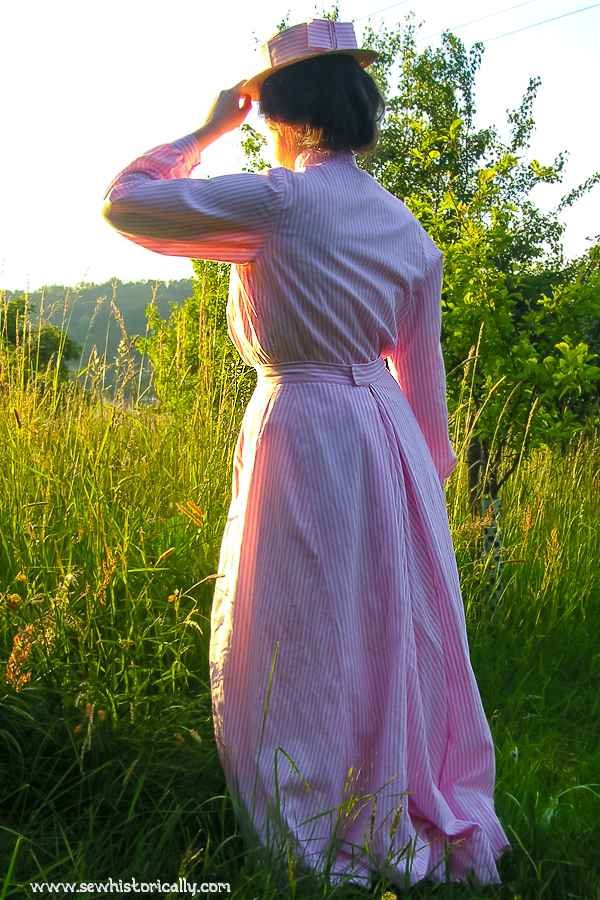
Summer Morning Dress For Outside The Home
‘Trim shirt waist suits of linen, crash or silk […] are really considered the correct morning gown of the well-dressed woman. A sailor hat or any ready-to-wear shape is worn, with silk or lisle gloves.
At summer colonies or resorts which can boast of a casino where concerts are given or athletic matches are played the morning costume is apt to be a trifle more dressy. A two-piece suit of linen or summer silk, with a blouse to match or in harmony is worn, and the little coat or jacket is a mass of embroidery or linen stitching, but always with the suggestion of tailored lines. One of the all-white hats in straw, with coque feathers, velvet bands or other semi-tailored effects, is worn, and a plain parasol and gloves are used.’ (Evening Star, 1904)
Related: The Edwardian Summer Girl
On The Street
A walking costume with dark gloves and a hat or bonnet. The walking dress should be plain: ‘A rich or showy dress in the street is apt to attract more attention than is desirable or always agreeable.’ (Household Companion, 1909) ‘For business or street dresses: Serge, poplin, gabardine, fine twilled material, dull satin.’ (A Manual Of Home-Making, 1919)
The skirt should clear the ground: ‘There is nothing more disgusting than to see a rich dress sweeping up the dirt and filth of the street. Fashion seems to decree this at the present time, with the ungraceful result of seeing nine women out of ten awkwardly holding up their skirts. The tenth sensibly ignores fashion in favor of comfort.’ (Household Companion, 1909) The shoes should be ‘high, warm, and easy to the feet, with a low, broad heel, and should be always neatly blackened.’
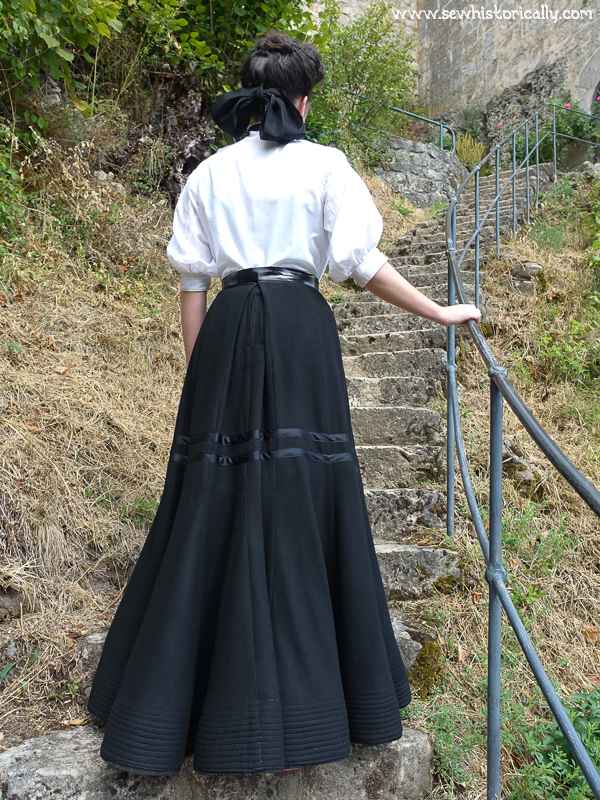
Carriage Dress
A lady ‘may dress as elegantly as she wishes’ with very light-colored gloves. (Household Companion, 1909)
Afternoon Gown
‘For afternoons are silks, lace gowns, also lace and muslin or lace and batiste. […] White always has been and always will be used […] No matter how it is made to be pretty and sweet, it should be very, very fluffy, and there should be billows and billows of lace and insertion there.’ (San Francisco Call, 1902)
‘For afternoon dresses: Batiste, swiss, voile, dimity, novelty material, linen, crepe de chine, pussy willow taffeta, crepe meteor, challis, nun’s veiling, wool crepe, henrietta.’ (A Manual Of Home-Making, 1919)
Summer Garden Party
‘The summer social function is always less formal than the winter affair by the same name, and the woman who receives an invitation for some really smart event should guard against overdressing. The safest rule to follow in every case is to aim at simplicity, at cool wash effects, and at sheerness of material and delicacy of handwork rather than at startling or rich combinations. The smart frocks turned out for women of unlimited means who go in for society during the summer as well as winter are of wash materials, so called. If the truth were told the majority of these gowns never see a tub, and would be sorry subjects when they were taken from the water. They are cleaned by a dry French process, and are far more expensive than many frocks in silk, velvet and other high-priced fabrics. […]
The most popular afternoon function is a garden or porch party, and for this wash frocks only are permissible. To attend a garden party in a silk gown loaded with trimming of various sorts is distinctly bad form. […] Here the summer girl may wear her most picturesque, most be-flowered, most lacy millinery possession, and her gown should be as diaphaneous as her purse will permit. Dimities, batistes, French lawns and mulls, organdies, dotted and figured nets and delicate lace gowns with many filmy flounces may be worn for the garden party. […] With this should be worn a picture hat of some fine open-work straw trimmed with roses to match the flowers in the dress. Or it may be a lingerie hat of lace with a pompadour wreath surrounding a flower of contrasting color. […] Silk or lisle gloves of very fine quality may be worn to meet elbow sleeves, and the shoes may be of black patent leather or of white suede, with white stockings to match.’ (Evening Star, 1904)
In The Evening At Home
A woman ‘should change her dress for the evening. Some neat and dainty costume should be worn, according to her taste, for it is in the evening that she is thrown most with the male members of her family, and is most likely to have visitors’. (Household Companion, 1909) ‘In Europe, the evening dress requires the exposure of the arms and neck; but in this country the more sensible plan of covering these parts of the body is widely the fashion, and should be observed except on very special occasions.’ (Household Companion, 1909) Perfumes ‘should be used only in the evening, and with the strictest moderation, and that perfumes to be tolerable must be of the most delicate kind.’ (Household Companion, 1909)
Evening Calls Upon Friends
An evening dress for at home wear with ‘a hood, or some light head-wrap easily laid aside. A bonnet should always be removed at the commencement of such a visit.’ (Household Companion, 1909)
Dinner Party
Demi-toilette: a less elaborate evening toilette than for a formal dinner party, ‘high dresses if the material be sufficiently rich’. (Household Companion, 1909) ‘Real flowers may be worn’.
Dinner Party At A Hotel
‘At the hotel dinner […] a decollete dinner gown is hardly good form. It is much better taste to have a detachable yoke which can be worn at the dinner table and removed for the dance which may follow in the evening. Gowns cut very low are not worn by the best dressers at summer hotel hops, nor do they make a display of glistening silks and many jewels.’ (Evening Star, 1904)
Formal Dinner Party
Full dress, ‘as elaborately as for a ball, though ball dress and dinner dress should by no means be the same. The occasions differ widely, and the fitness of things needs to be strictly observed.’ (Household Companion, 1909) Jewelry ‘may be freely worn’. ‘Decollete gowns are as essential for the formal dinner in summer as for winter.’ (Evening Star, 1904)
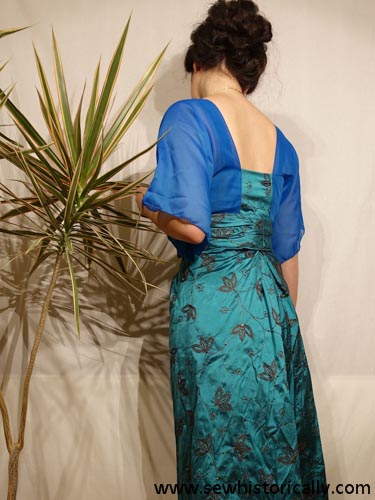
For Balls And Soirees
‘The dress for balls and soirees should be of the richest within the lady’s means. Yet a certain degree of repression is important, if one would avoid seeming overdressed.’ (Household Companion, 1909) Full dress is worn with white kid gloves which are never removed in the ballroom, and white satin or kid boots. ‘Ladies may […] make their fullest display of jewelry. As everything about a ball-room should be light and attractive, it is in order for elderly ladies, who do not dance, to wear dresses more youthful in style and color than would be suitable for dinner, concert, or opera. For those who dance, silk dresses are, as a rule, objectionable. Flowers are the proper ornaments for the head and dress. French ladies select them with reference to the season; but this is not insisted on in this country, and summer flowers may be worn at Christmas.’ (Household Companion, 1909) Artificial flowers should be worn instead of real flowers because the ‘heat and dancing are apt to cause real flowers to droop and shed their petals.’
Opera
‘The richest full dress should be worn at the opera. The head should be bare, and dressed in the most becoming style. Jewelry may be worn, according to taste, as there is no place where it shows to better advantage. A light or brilliant colored opera cloak will add greatly to the lady’s appearance and comfort. Gloves of white, or delicately tinted, kid only are to be worn.’ (Household Companion, 1909)
Other Places Of Amusement, Such As Theater
An ‘ordinary walking-dress […] [with a] rich and elegant shawl may be worn […] The sensible fashion is now making its way to remove the hat at theatres and lectures, out of due regard for those whose view of the stage may be obstructed. This being the case, there is no need to spoil the hair by wearing hat or bonnet on the way thither.’ (Household Companion, 1909)
Church
‘Plain and simple dress should be worn for church, with very little jewelry. The costume should be of quiet colors.’ (Household Companion, 1909)
Business Wear
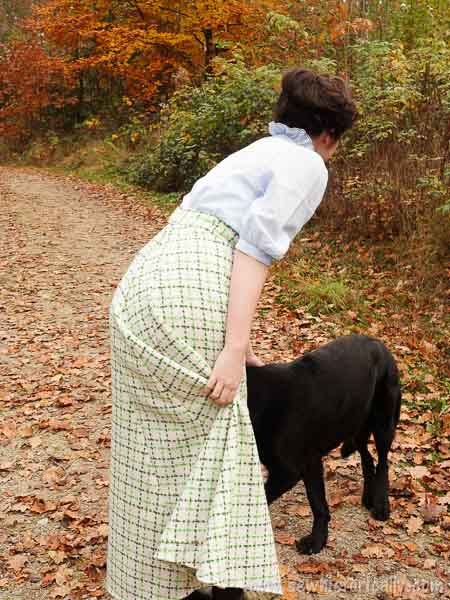
In Winter
Material for ‘winter wear […] should have warmth without much weight’ (Home And School Sewing, 1901) ‘Wear warm, light garments, to secure an even temperature. In winter it is even more important to protect the spine than the chest. Wear a silk sleeveless jacket next the skin, if you do not wish to wear a flannel one. At any rate, if you are delicate, young or old, cover the spine with a strip of flannel tied by a ribbon, and extending to the hips. There will be no need to fear colds, bronchitis, or phthisis, if this precaution is taken, and it does not prevent wearing a decollete gown.’ (Household Companion, 1909)
Wear under-bodices of ‘palest pink or cream silk and wool’ under ‘transparent lace yokes and collars […] which do not show when worn under the lace, and yet are quite capable of keeping off the sudden chill which is so apt to eventuate in pneumonia.’ (Every Woman’s Encyclopaedia, 1910-2)
‘It is not a good plan to wear fur close up round the throat, as it makes the throat delicate, and is extremely difficult to discard without taking cold.’ Winter hats are smaller than summer hats. Materials for winter hats are velvet, plush and felt; and they may be trimmed with wings, fur, embroidery or fruits. ‘Ribbons as trimmings are very suitable for bad weather; flowers are admissible for winter hats, but are not used extensively.’ In cold weather, wear woolen gloves over the kid gloves. (Every Woman’s Encyclopaedia, 1910-2)
Rainwear
To dress suitably for wet weather: wear a short, warm, woolen walking skirt, a flannel blouse, a short jacket, a felt hat ‘trimmed with one or more wings and a band of soft silk’, and laced walking boots ending half way between knee and ankle and with thick soles. Silk bloomers ‘are to be preferred to petticoat for this particular costume’. (Health And Beauty Hints, 1910) An umbrella isn’t necessary.
‘For windy weather all the garments should be as close-fitting as possible. […] Gauntlet gloves are useful ; they prevent the wind from blowing up the sleeves. For serviceable skirts it is not a bad plan to have the hem lined up inside with leather about four inches deep. It helps to weight the skirt and keep it down, and in wet weather if the hem gets muddy it can be easily sponged and dried. Boots are the best wear for winter ; if shoes are worn, gaiters should be added for the sake of warmth and dryness.’ (Every Woman’s Encyclopaedia, 1910-2) There were already rubber shoes which were worn ‘during the winter and stormy weather. Rubber shoe coverings are made to protect the shoe from water and snow and may be in the form of either slippers or arctics.’ (A manual of shoemaking and leather and rubber products, 1912)
‘It is wise to remove quills or feather mounts when strong wind is to be encountered, for they suffer terribly from the elements. A knot of ribbon should be ready to replace the more perishable adornment for the time being.’ (Every Woman’s Encyclopaedia, 1910-2)
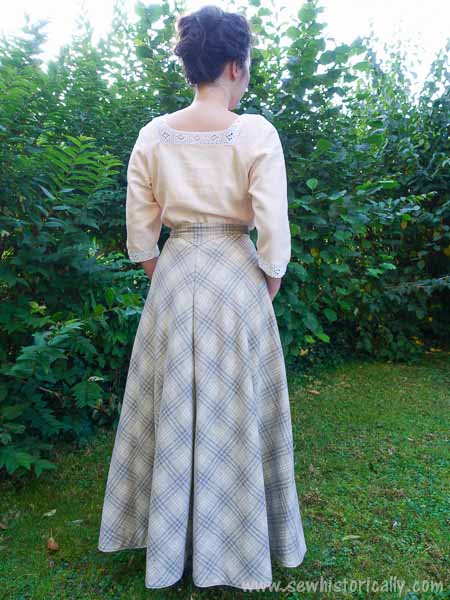
Walking Costume
‘Even if the tour is to be in midwinter, no heavy overcoats or dragging undergarments should be worn. Light woollen underclothes are the safest and healthiest, cotton garments are likely to be extremely dangerous. If a woman is used to corsets, some pliable hygienic make without bones, or those made of ribbon, are the only possible wear. Dark serge or stockinette knickers should be worn under a short, plain tweed skirt. The kind of jersey made like a man’s football “sweater,” pulling on over the head, is the neatest and most comfortable form of coat. It resists rain for a long time, protects the chest and back from sharp winds, can be dried quickly, and, if necessary, washed.
A small woollen cap, known as a “rinking cap,” which only needs two hairpins to keep it in place, is extremely becoming, and suitable either for summer or winter.’ In summer, even ‘on the hottest days, a flannel blouse, with a low collar, is preferable to a cotton one, but if the hat affords no protection for the neck from the midday sun it is very unwise to leave the back of the neck bare, and an upright flannel or soft linen collar should be worn. […]
A light, high boot with a broad welt and a flat heel is always comfortable and safe even in the worst weather. By far the best kind of stockings to wear are thick cashmere ones, for all people who have walked a great deal agree that thick stockings, even in summer, are quite the most comfortable. They enable the boots to fit more perfectly and so prevent chafing, which quickly makes walking impossible.’ (Every Woman’s Encyclopaedia, 1910-2)
Related: Edwardian Walking Dresses
Traveling Costume
‘Ladies should wear neat traveling dresses of suitable material and simple style,’ which are ‘quiet in color, materials that will not show dirt being preferable. A waterproof cloak is a very desirable addition, as it may be at any time suddenly needed. In summer travel a long linen duster, belted at the waist, should be worn over the dress.’ (Household Companion, 1909) Traveling ladies should ‘display as little jewelry as possible, and carry the smallest amount of baggage by hand. It is important to have the initials or full name on all trunks.’ (Household Companion, 1909)
Related: Staycation In The Edwardian Era
Tropical Sea Voyage
On board: sailor suits – made of duck, pique or linen – with a sailor hat, and organdie dresses
On shore: thin cotton dresses – made of organdie, dimity, mull and net – with a lingerie hat, parasol and netted mitts
‘Sailor suits are almost always pretty and becoming, and just the thing to wear on an ocean steamer running through the tropics.’ A sailor suit ‘is of duck and so made as to draw over the head like a sweater, and it can be worn either with or without the little vest. The skirt is quite short, which is not only proper but necessary on board a steamer.[…] Some very pretty women can be seen on a Tahitian steamer, prettily and becomingly dressed in organdies, dimities or mulls […] Underclothes […] must be of the thinnest possible material.
A very nice material for a gown in the tropics is net. […] Of course, these net gowns are hardly appropriate for steamer wear, but they are just the thing after the steamer reaches Tahiti, and the passengers are on shore. […] A particularly necessary adjunct in the tropics is a parasol […]
A dress that can be worn both on the steamer and on shore at the island is a white pique, linen or duck skirt, with a shirtwaist of cool lawn, especially when a lingerie hat and parasol are added.’ (San Francisco Call, 1905).
Country Or Seaside
Simple and ‘inexpensive dresses’ are worn with a hat ‘with a brim sufficiently wide to shield the face and neck from the sun’. (Household Companion, 1909) Indispensable for the holiday is a ‘serge or tweed dress made with a short [ankle length] skirt; […] lined flatly having no separate foundation, and fastening down the side of the front; thus only do they make for comfort and lightness of weight.’ (The Delineator, 1902)
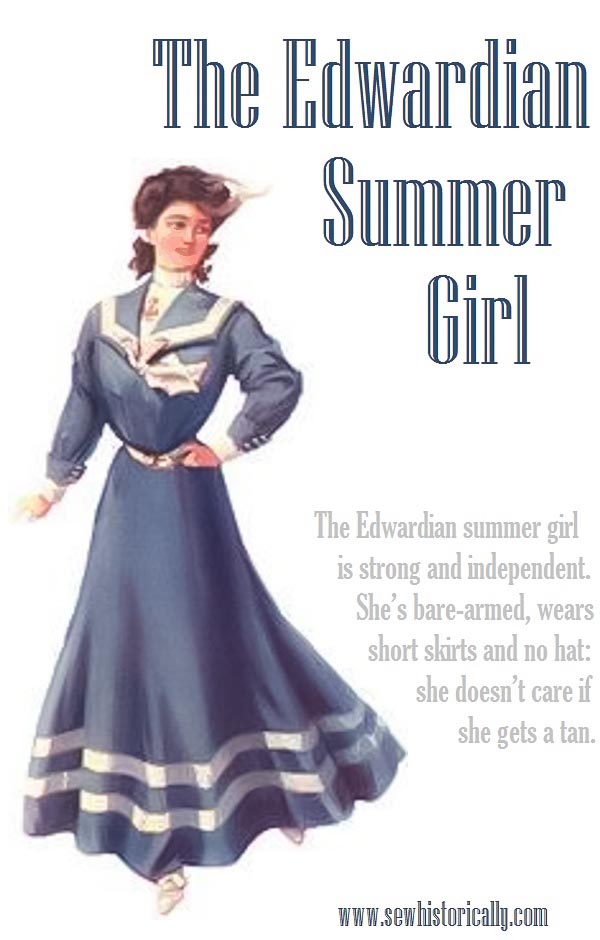
Seaside Costume
Linen and pique gowns, ‘ready made pique dresses are purchasable in good shops at a moderate price, these being trimmed with embroidered spots and coloured machine-stitchings, and made with blouse bodices and fanciful collars and plain skirts with shaped flounces.’ (The Delineator, 1902)
Bathing Dress
The bathing costume ‘should be made of blue or gray flannel. The skirt should come down to the ankles, and the sleeves should be long. An oil silk or India-rubber cap, fitting tightly around the head, will protect the hair from the salt water.’ (Household Companion, 1909) A bathing corset may be worn.
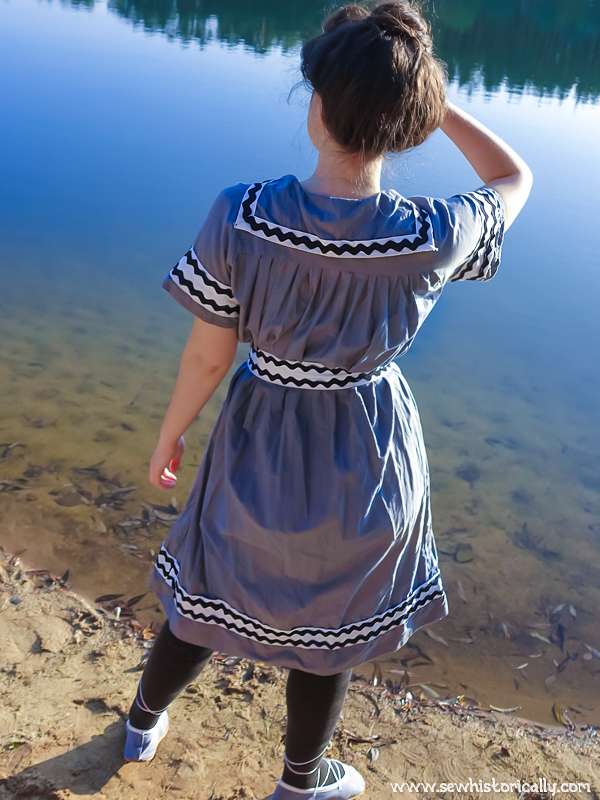
Punting Costume
‘The best kit for punting consists of a very plainly made linen blouse and skirt […] the blouse cut so as to allow absolute freedom to the arms, indiarubber-soled shoes, to prevent their slipping during the punting stroke, and a rather stiff-brimmed but shady hat trimmed with a wreath of green leaves or a big ribbon bow to match the colour of the dress. Rings must be discarded, for if worn while punting they blister the hands, and all jewellery is out of place on the river.’ (Every Woman’s Encyclopaedia, 1910-2)
Yachting Dress
‘If she has no regular yachting dress the next best thing is a white pique suit with a touch of color to the throat and belt and a loose reefer of scarlet, blue or tan cloth, and a yachting cap or sailor effect in stitched linen is a good investment. These are to be worn if the weather is warm and pleasant. If it looks forbidding the inexperienced guest will need to select a heavier frock, something in tweed, cheviot or canvas. With this she should wear her cravenette coat.’ (Evening Star, 1904)
Cycling Costume
‘Short rides on level roads can be accomplished with but slight modification of ordinary attire; and the sailor-hat, shirt-waist, serge-skirt uniform, is as much at home on the bicycle as it is anywhere else the world over.’ (The Out Of Door Library: Athletic Sports, 1897)
Golf Costume
‘Short [ankle length] skirts and cotton blouses […] Golf costumes of a single color are the favorites, trimmed with bands of cloth in a lighter or darker tone of the same color. Unobtrusive as well as gay effects are in evidence, red predominating.’ (The Delineator, 1902)
Bowling Costume
‘Any dress that gives you perfect freedom will do for bowling. Either a shirt waist or a sweater is comfortable; the skirt must be short. A gymnasium shoe, with the sole made to prevent slipping, is used. […] There can be no true bowling in long skirts and tight corsets.’ (Los Angeles Herald, 1904) ‘The correct costume for evening bowling is a tailor-made white cheviot shirt waist, with white or colored stock, golf skirt and thick low shoes.’ (Los Angeles Herald, 1903).
Gym Suit
‘The costume to be worn during these exercises is a simple one. No corset is used. A sweater or jersey, a pair of bloomers and rubber shoes are essential’ (San Francisco Call, 1903).
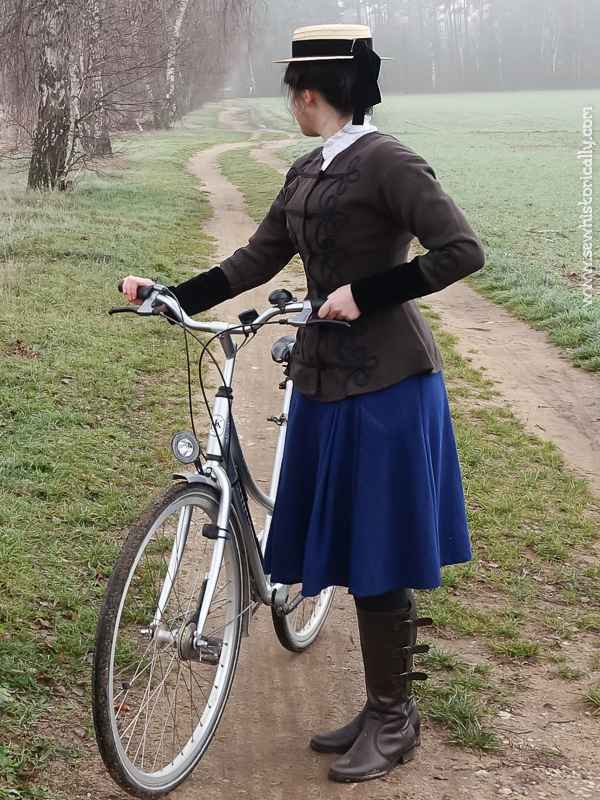
Skating Costume
‘The correct skating costume is of a rough material, with skirt shorter than the ordinary and a half fitted jacket of three-quarter length, while the hat should be small and should fit snugly on the head. […] a skirt to be comfortable to skate in should have greater width and flare […] An excellent style of skirt is one that closely resembles the old golf skirt of heavy tweed, made circular, with a deep double stitched hem at the feet to keep the material from blowing about in the wind. A plain gored skirt is also good for the purpose, but no matter what the design the material should be of fairly heavy quality. For outdoor skating a good length of skirt is one which reaches just to the top of the laced boots, but for the girl whose skirts are still short this one may be of the same length as the rest of her gowns.
The jacket for a skating costume should be made full large, to allow of a sweater being worn underneath, as there will be few days so mild as to make this added protection unnecessary. The old Norfolk jacket is an excellent model for this dress. A medium three-quarter length is best for a skating jacket, as, unless it is extremely cold, too long a coat is a great inconvenience. Straps of the same material or of leather may be used on this coat, and leather collar, revers and cuffs are always smart on the Norfolk jackets.
Rough tweed, homespun, heavy ribbed serge, cheviot and camel’s hair cloth all are excellent for a skating costume, while for a rather smarter style of costume corduroy is exceptionally pretty. […] Strange to say, the Directoire coat, with its loose back and trimmings of straps and buttons, does not look too exaggerated for a skating costume […]
The best color for a skating dress depends, of course, wholly upon the wearer, but red, if it is at all becoming, is sure to look charming, and all reds, from the deepest in tone to the most brilliant, have ever been the favorites for this style of dress. Brown, green and dark blue are all serviceable colors, while the lighter shades are sure to be attractive if not quite so useful. Corduroy is an excellent material for hard wear, and even in the light shades is frequently made use of for the skating costumes. Even white corduroy will not prove such a bad investment, as the material can be either washed or cleaned […]
A small hat is essential for skating, as any width of brim will make out of door life in windy weather a misery instead of a pleasure. The little fur turbans that can be bought reasonably at this time of year make abouth the best skating hat procurable. Black fur is, perhaps, the most useful’ (Los Angeles Herald, 1909).
Related: Edwardian Skating Costumes
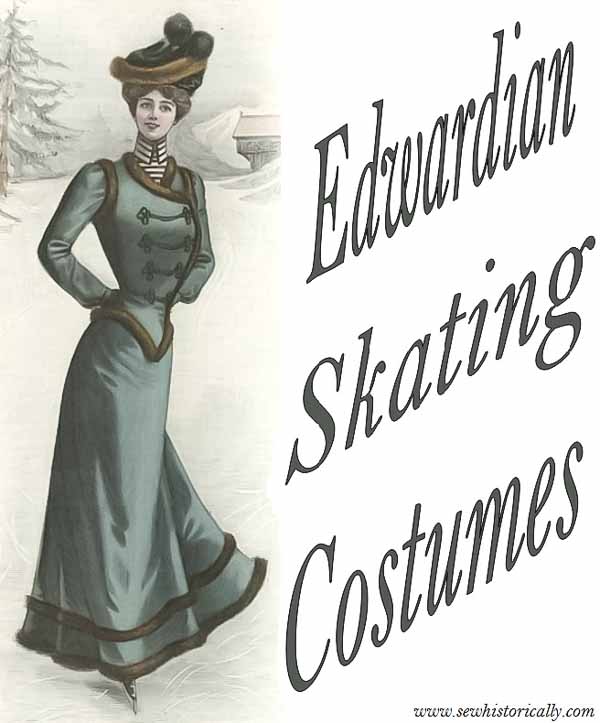
Shooting Costume
‘The best kit for shooting consists of a light tweed coat and skirt – waterproof, it possible […] light brownish green, somewhat the colour of a lichen-covered stone, is excellent; or a heather mixture with a good deal of purple in it is good for grouse shooting or the moors; and a light russet brown, the colour of dead bracken, is both serviceable and becoming for pheasant shooting.
A shooting skirt should be unlined, and made with a boxpleat at the back, to allow of room for fence climbing. It may be lined up with leather for a few inches, or faced with its own material […] A small felt or tweed hat or cap of the same invisible colour as the coat and skirt should be worn, leather gloves, and high blacking leather boots, with nails in them, reaching to the knee. As a substitute, stout shoes and high cloth gaiters may be worn.
The most useful coat is of such a length that the wearer can sit upon the back of it, and a breadth of mackintosh may with advantage be fastened across the lower part of the back of the coat, enabling the wearer to sit on damp grass with impunity. The coat collar should be so arranged that it can be turned up and fastened tightly round the throat in wet weather. The pockets should be lined with mackintosh, and completed with outside flaps to button down, so that cartridges, kodak films, or luncheon sandwiches can be kept clean and dry. Under the coat a silk or flannel shirt, with soft collar and tie of any suitable colour, may be worn.’ (Every Woman’s Encyclopaedia, 1910-2)
Camping Outfit
A khaki skirt and jacket. Khaki is a light olive green wool fabric which ‘does not tear or crumple. Besides that, it is light and cool and does not absorb or show the dust.’ (San Francisco Call, 1905)
Motoring Fashion
Related: Edwardian Motoring Fashion
Fishing Costume
‘It is of khaki, of course, and the skirt is the remarkable part of it. This skirt when hanging straight down reaches above the boots, in fact about half way between the ankle and the knee. It is provided with cords or halliards, running down the seams from the belt to the bottom of the skirt, which can be pulled in whenever necessary, raising the skirt to any desired height. But your rubber boots, which reach nearly to the thigh, are your protection, and they will enable you to wade in any stream […]
The pulling up of the skirt does not by any means imply an awkward and hunchy appearance, but it is so […] made that it still has a good appearance […] Knickerbockers or leggins should be worn under this skirt. These are not a bit like “bloomers,” but are made in a good shape, fitting nicely, and buttoning snugly just below the knee on a “knee cuff” […] The high rubber boots […] are held up by two straps that button at the waist.’ (San Francisco Call, 1905)
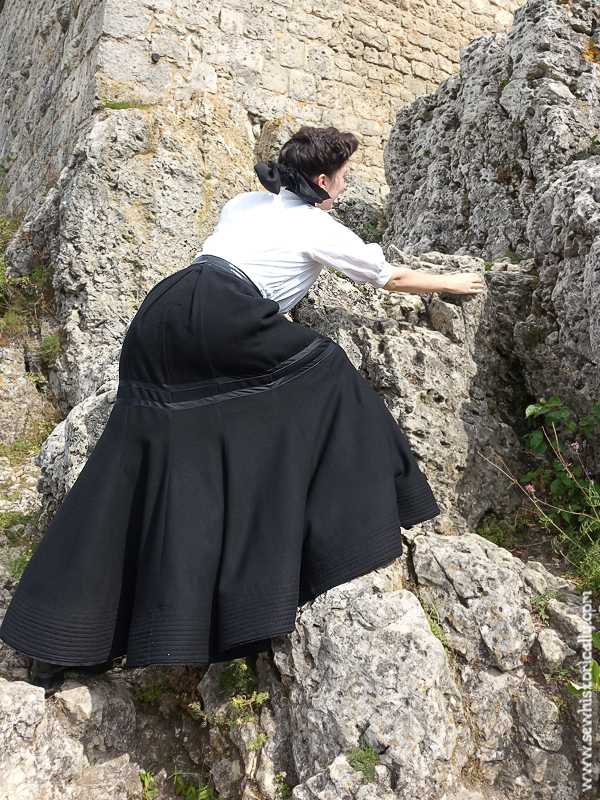
Climbing Costume
‘The skirt must […] be quite short and clinging, and leggins or knickerbockers must be worn under it.’ (San Francisco Call, 1905)
Edwardian Clothing Materials
Cotton
‘Standard cotton materials such as muslins, organdies, percales, calicoes, and sheetings differ only in the weight of the material, fineness of thread, hardness of twist, and method of finish. Ginghams have the thread dyed before weaving and fancy weaves are frequently used. Duck, denim, and some other heavy materials have very hard twisted threads and are frequently woven with a twill. Silkolene is a trade name for a fine cotton cloth with a silky finish given after the cloth is woven. Mercerized cottons make lustrous materials, such as poplin, imitation pongee, and numerous attractive house-furnishing materials. India linon is entirely cotton, as are outing flannel and canton flannel. Many tussahs, voiles, and economy linens and other materials with rather deceptive names are cotton materials made to imitate silk, wool, or linen. […]
Long cloth is a soft, firm fabric with a close weave made of a fine grade of cotton yarn of medium twist. The material is dull in finish and has a rather fuzzy surface, making it undesirable for outer garments. It is used for undergarments and aprons.
Cambric is a plain weave with a smooth surface on one side. There are many grades of this material. Because of its smooth surface it sheds the dust. It is a most desirable material for undergarments, aprons, waists, and baby clothing.
Nainsook is a very soft, light cotton fabric with one surface slightly calendered, or pressed with heavy hot cylinders to give a gloss. It may be distinguished from cambric, long cloth, or batiste, because its construction is not so firm nor its finish so smooth. It is used for infants’ clothes, lingerie, and undergarments.
Batiste is a sheer, lustrous cloth in white and dainty color. There is often a mercerized thread introduced in the better grades. It is used for waists, dresses, and baby clothes.’ (A Manual Of Home-Making, 1919)
Wool & Silk
‘Dress fabrics in woolen goods should always be soft to the eye and to the touch. China crêpes, colored silks of medium weight, make charming costumes, and are to be preferred to the stiff silks; but a black silk gown should be of good quality, as an inferior grade does not wear well and soon grows shabby. […] Mixed cotton and wool goods are usually almost worthless. One all-woolen gown is worth two of them.’ (Household Companion, 1909)
‘Serges and tweeds should be employed for coats and skirts for hard wear. A good Harris tweed, tailor-made, is practically everlasting, and for the country and hard wear is excellent.’ (Every Woman’s Encyclopaedia, 1910-2)
Dictionary Of Edwardian Fabrics
A lot of fabrics that were popular clothing materials in the Edwardian era are no longer produced today. And other fabrics still have the same name today but looked completely different in the 1900s.
So if you want to know what type of fabric duck, Indian head, brilliantine, galatea, heatherbloom or nainsook were, what they looked like and what they were used for in the 1900s. Or if you want to create an authentic Edwardian outfit and want to know what type of fabric to use for what type of clothing: The following two primary sources are the best dictionaries of Edwardian types of fabrics I’ve found so far.
What Colors To Wear In The Edwardian Era
‘Pale-blue is apt to make blondes look ashen. Dark-blue, on the contrary, is very becoming to them, and a blue velvet gown brings out all their delicate coloring. Neutral tints are very unbecoming to them. Brunettes with an inclination to be sallow will do well to avoid blue, as it makes them appear greenish or tawny. Green is trying to them unless they are very fair. It suits blondes perfectly, especially those who have color.
Pale brunettes should affect shades of red, which increase their beauty. Crimson may be worn by blondes. Yellow is a superb contrast for a pale brunette, especially under artificial light, when it is more subdued than in the sunlight. This color softens an olive skin, and borrows from it a creamy tint, harmonizing wonderfully well with dark hair and brilliant eyes. On the contrary, yellow is unbecoming to most blondes.’ (Household Companion, 1909)
‘Elderly ladies should dress as richly as their means permit. A thin old lady may wear delicate colors, while one of stout person or florid complexion will look best in black or dark grey. But for young and old alike the complexion and figure have much to do with determining the suitable colors. Rich colors harmonize well with brunette complexions, but for blondes and those of delicate tints of face the desirable colors to be worn are those of more delicate hue.’ (Household Companion, 1909)
In winter, warm colors should be worn, such as warm shades of brown, red, dark blue and grey. ‘For a long time white was not considered winter wear, but it has become much more general. […] But it should be a warm, creamy white, not a blue-white ; and the material should be a warm one, such as velvet, wool, or fur. Sometimes a cold-coloured costume can be made to look warm and suitable for winter by the judicious admixture of warm colours in the trimming’. (Every Woman’s Encyclopaedia, 1910-2) ‘Brown, gray and deep blue are for traveling.’ (San Francisco Call, 1903)
More About Edwardian Fashion
Edwardian Shoes
‘The style of the shoe is dominated by fashion. All styles are related, that is, every part of our dress is influenced by the prevailing fashion, ideas of color, fabric, or garment outline. To illustrate : when short skirts are stylish, women wear mannish shoes to harmonize with them; on the other hand, with long skirts they must have a shoe that is neat and small, hence, the short vamp. When women wear white in the summer, cool canvas shoes spring into favor; when gray and blue dress materials are to be used, a variety of tan shoes are worn to harmonize, etc.’ (A manual of shoemaking and leather and rubber products, 1912)
How To Hold A Dress
‘Most elderly women hold up their skirts by taking a handful on each side […] It’s ungraceful, to be sure, and probably is a survival of the time when each little girl was taught to catch up her frock in each hand as she curtsied to her elders. It was all right in those good old days of hoop skirts […] but it isn’t pretty today. However, if it suits grandmother and greataunt, let them do it, for you’ll only confuse and annoy them by pointing out its ungracefulness.
The most of us go along frantically clutching at our draperies, painfully aware that we are getting them up too far on one side and letting them train on the street on the other side, but quite unable to remedy it.
Some day, when manners and grace will be considered at their true values and taught along with mathematics and English, we are going to train our womankind into the proper ways to hold a skirt. How to hold it up that it will be lifted from the street yet will not be too tight nor too loose. We will teach them how how to carry it with a graceful curve of the arm and with no unsightly bending of the body.
It has been truly said that few women could wear a shawl gracefully. Perhaps that explains why shawls are so little worn. But it sometimes seems that there are still fewer woman who know how to carry a skirt gracefully. Every woman should see herself as she holds up her skirt in a set of full length mirrors at such angles that she could see all around herself at once. Improvement might result.’ (Los Angeles Herald, 1909)
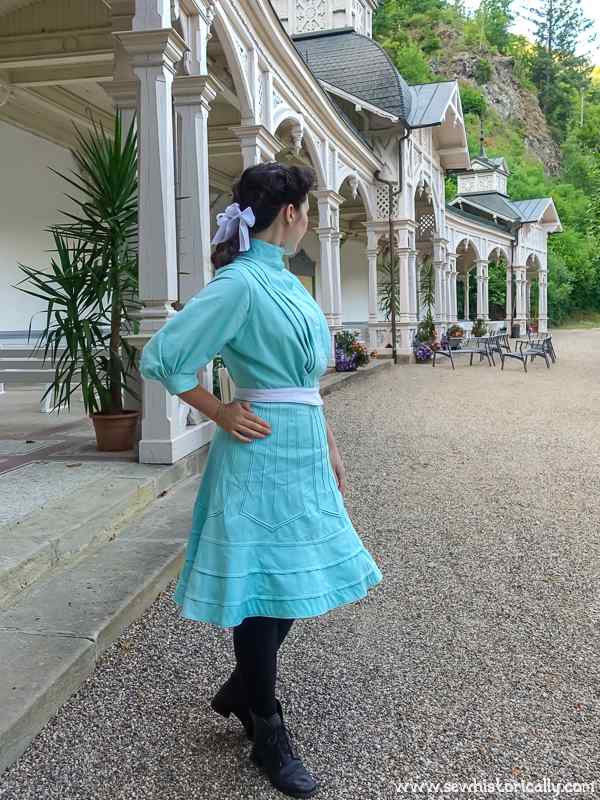
Economy In Dress
A woman doesn’t have to be rich in order to look well dressed, but she has to spend her money wisely: Always buy good material ‘that will not shrink or roughen if wet, that will not fade when exposed to the light, and that has no loose threads in the weave to catch and draw’, as it’ll be cheaper in the long run. ‘It is economy to buy the very best possible material. Fewer clothes may be bought if necessary, but the material and texture should be good. Well-made garments that are bought are expensive; garments of equal quality can be made at home more cheaply, if a woman is skillful and if her time is not more valuable spent in some other way.’ (A Manual Of Home-Making, 1919) Standard dress materials, such as serge and broadcloth are ‘far more serviceable than so-called novelties for which a high price is charged on account of some peculiarity in the weave.’ Don’t buy cheap lace as it’ll always look cheap: Rather use less, but good lace and embroidery. A well fitted gown made from good material looks better than ‘than one made of inferior material and loaded with trimmings.’ (Home And School Sewing, 1901)
‘Beautiful feathers are durable and graceful ornaments for bonnets; cheap ones are poor economy. Low-priced finery is not worth buying. One should never economize in this way. It is never wise to buy one article of dress noticeably richer than the rest of the wardrobe. For example, a velvet dress is serviceable, but unless one can afford other costumes as elegant, it is out of place.’ (Household Companion, 1909)
‘No greater economy can be effected than by selecting one or two colours for the season’s array of clothes, and keeping to them, even though bargain counters beckon with alluring trifles of other hue, and accessories of undoubted novelty, in the wrong tint, tempt almost beyond all human power of resistance. […] Autumn and winter sales are useful to the woman who wishes to economise in dress; that is, if she is able to keep her head sufficiently to select not only what will be useful to her, but to reject everything that she does not really need.’ (Every Woman’s Encyclopaedia, 1910-2)
Tailormade costumes should be well cut without much fashion details so that they can be worn for some years: ‘No one detects it if we wear last year’s golfing clothes, if well cut to begin with; and the accessories – belt, tie, veil, and gloves – can be always fresh.’ (Every Woman’s Encyclopaedia, 1910-2) ‘One of the best economies is to have all necessities of good quality. The possession of good boots and shoes, and well-cut, well-fitting gloves, gives an assurance which even a nicely-brushed, though much-worn, skirt is powerless to disturb. […] It is better to have a smart hat, neat neckwear, and belt, with a blouse that has seen some service, than to have a smart new-blouse with a last year’s hat and untidy shoes.’ Transferable hat trimmings ‘with safety pins firmly stitched at the back’ are also useful to change a morning hat into a dressy one for afternoon wear.
If the shape of a garment is outdated, refashion the dress instead of buying new material. To remodel a garment, ‘it should not be worn until it is very shabby, but should be carefully ripped apart, brushed and shaken in the open air. If the material can be turned, remove all stains by stretching it out on a clean, smooth board and scrubbing it with a soft brush and soap and warm water, rinsing such places by holding the material over a bowl and pouring water through it. Be careful not to stretch it while doing this. Lay a cloth over it and press on the wrong side while it is still damp. […] In remaking any material, it is generally advisable to combine it with some other fabric. Frequently this may be done by making a yoke or vest, cuffs and collars on the waist, and introducing a panel or bias fold on the skirt, being careful to select materials whose coloring will be low in tone and that will not attract attention to any lack of freshness in the original goods.’ (Home And School Sewing, 1901)
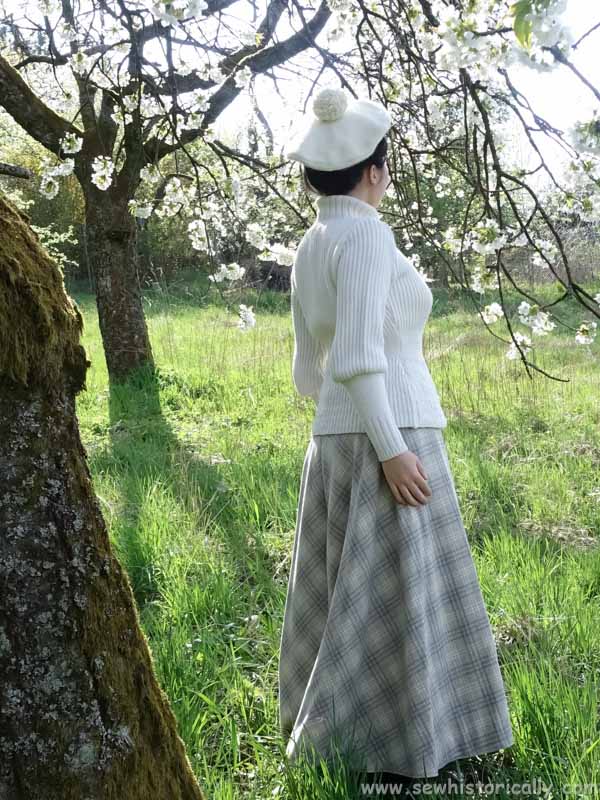
‘One of the best ways of effecting economy in dress is to have a sufficiency of clothes to prevent the necessity of wearing things on unsuitable occasions. For instance, if you have a short, stout skirt suitable for country wear, there is no danger of having to walk out in muddy lanes, when staying with friends out of town, in the good cloth skirt of town walking length. Always have two or more evening dresses in use, so that the diaphanous best one need not stand the strain of theatre or quiet evening wear. Never sit for long or lounge in a well-cut new cloth skirt. The knee breadth will bag at the knee almost as seriously as a man’s trousers. Make, or buy, a pretty rest gown to lounge in : this is not an extravagance, but an economy. No woman can afford to do without a rest gown […] to save her street clothes.’ (Every Woman’s Encyclopaedia, 1910-2)
‘Clothing will look better and wear longer if properly cared for. Careful folding, brushing, and cleaning have much to do with the appearance of a wardrobe.’ (Home And School Sewing, 1901)
How To Store Clothes In The Edwardian Era
‘Well she knows that if garments are laid aside carelessly, folded badly, or hung up without due regard to the set of the coat or skirt, their appearance will be far from pleasing when next they are worn.
Whenever possible, coats, skirts, and costumes should be hung in preference to keeping them in a drawer or box, however carefully folded.
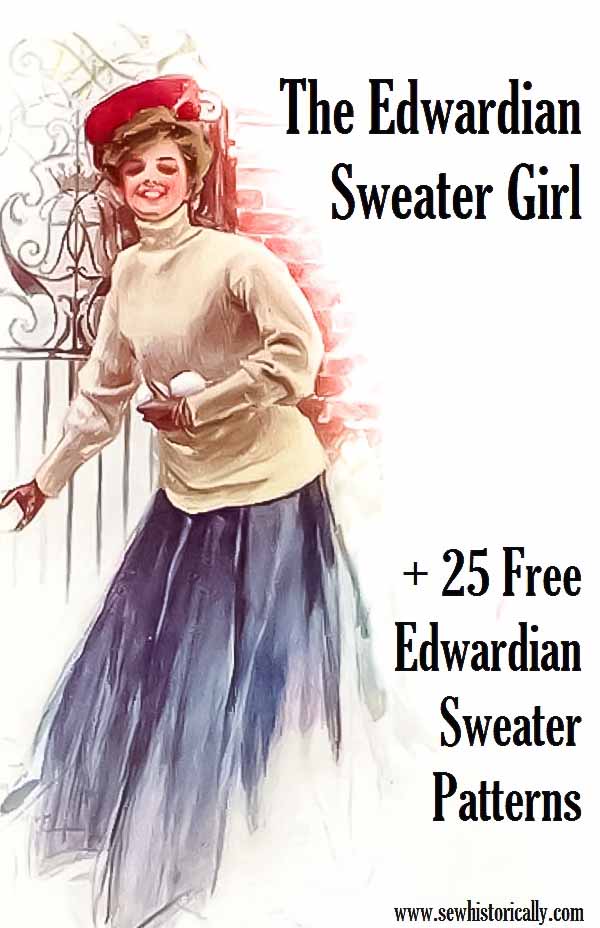
Dress hangers are not always available, therefore carefully placed loops, by which garments can be hung on a wardrobe hook, must not be forgotten.
For skirts, there should always be two loops on each side on the waist-belt. Dress bodices and coats usually have the loop placed at the neck, although many people prefer a loop under each arm by which to suspend them. Princess gowns can be suspended by loops sewn inside at the waistline, or under the arms.
The better plan, however, is to use some of the many forms of hangers that are now provided for the woman who wishes to care for her clothes when not in use. […] The simplest form of hanger […] is the curved wooden arm, with a metal hook in the centre. It costs only a penny or two, and is slipped into the sleeves of coat or bodice. […] For skirts, a very simple but most satisfactory device consists of two metal bars, some four inches long, and covered with felt, between which the skirt band is tightly gripped. The bars are controlled by a sliding ring, and such a holder will carry two skirts if required.’ (Every Woman’s Encyclopaedia, 1910-2)
‘The clothes that hang in the closet or wardrobe from day to day without an airing, as so many of our dresses for less usual occasions do, should be well protected. The best method is to wrap them first in blue tissue paper – white tissue paper turns white garments yellow – and then in a calico bag made a little longer and wider than the dress and provided with a tape drawstring. Sleeves, by the way, should first be stuffed with the tissue paper.
To each drawstring attach a curtain hook and then stretch strong twine or tape from one end of the closet to the other, nailing it fast. On this hook the different bags. A curtain rod will do as well, but will take up more room. Delicate gowns should be hung upon a coat-hanger before being encased in the tissue paper. The calico bag, however, is the most important part of the treatment.’ (San Francisco Call, 1910)
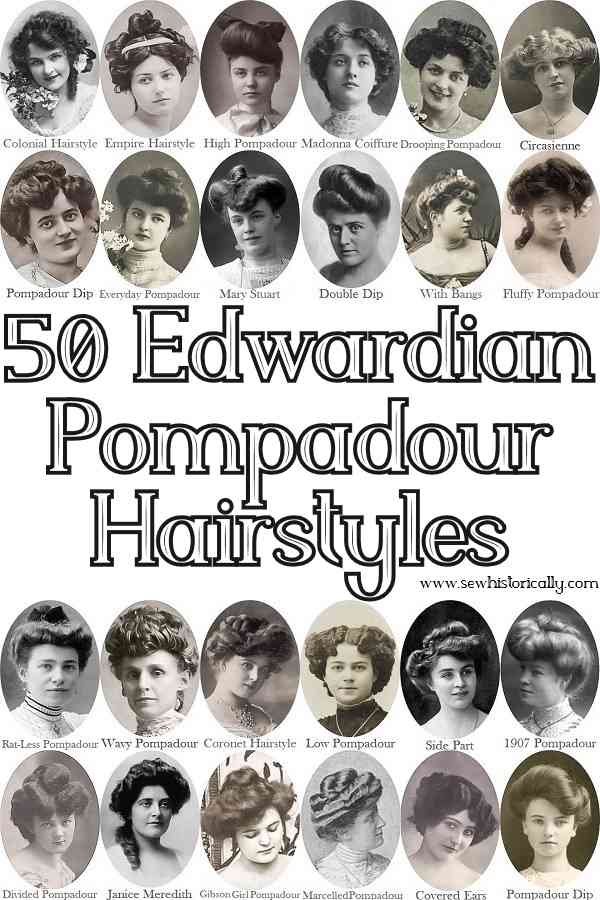
References
- Dooley, W. H. (1912) A manual of shoemaking and leather and rubber products, Little, Brown and company, Boston, available at https://archive.org/details/manualofshoemaki00dool, accessed 26/7/2016
- Evening Star (1909) ‘Saving The Gown’, available at https://chroniclingamerica.loc.gov/lccn/sn83045462/1909-08-08/ed-1/seq-64, accessed 6/5/2021
- Johnson, A., Hill, J. & Hartshorne, H. (1909) Household Companion: Book Of Etiquette, Dewsnap, available at http://chestofbooks.com/society/Household-Companion/The-Home-Book-Of-Etiquette/index.html#.VkuxtL8kTgo, accessed 18/11/2015
- Los Angeles Herald (1909) ‘Practical Fashions For Skating Costumes’, available at https://cdnc.ucr.edu/cgi-bin/cdnc?a=d&d=LAH19090103.2.79.6&srpos=158&dliv=none&e=——190-en–20–141-byDA-txt-txIN-sweater-ILLUSTRATION——1, accessed 9/11/2018
- Mixter, M. (1910) Health And Beauty Hints, Cupples & Leon Company, New York, available at https://archive.org/details/healthbeautyhint00mixt/page/n7, accessed 9/11/2018
- Patton, F. (1901) Home And School Sewing, Newson & Company, New York, available at http://chestofbooks.com/crafts/needlework/Home-And-School-Sewing/index.html, accessed 16/9/2016
- Prescott, A. (1903) ‘The Piazza Gown’ in San Francisco Call, available at https://cdnc.ucr.edu/cgi-bin/cdnc?a=d&d=SFC19030621.2.263.4&srpos=43&e=——190-en–20–41-byDA-txt-txIN-travel+bag-ILLUSTRATION——1, accessed 21/1/2018
- San Francisco Call (1905) ‘The Vacation Outfit’, available at https://cdnc.ucr.edu/cgi-bin/cdnc?a=d&d=SFC19050604.2.203.13&srpos=83&dliv=none&e=——190-en–20–81-byDA-txt-txIN-sweater-ILLUSTRATION——1, accessed 9/11/2018
- San Francisco Call (1910) ‘In The Closet’, available at https://cdnc.ucr.edu/?a=d&d=SFC19101127.2.237.5.14&dliv=none&e=——191-en–20–1-byDA-txt-txIN-nightcap——-1, accessed 5/6/2019
- Sargent, D. A. (1897) The Out Of Door Library: Athletic Sports, Charles Scribner’s Sons, available at https://chestofbooks.com/sports/athletics/Outdoor-Library/index.html, accessed 9/11/2018
- The Delineator (1902) ‘The Fashions of London’, available at http://edwardian-clothing.blogspot.de/2011/12/edwardian-era-fashion-chit-chat.html, accessed 1/10/2016
- Van Rensselaer, M. (1919) A Manual Of Home-Making, The Macmillan Company, New York, available at http://chestofbooks.com/food/household/A-Manual-Of-Home-Making/index.html, accessed 16/9/2016
- Van Vorst, J. (1902) ‘Dress and Gossip of Paris’ in The Delineator, available at http://edwardian-clothing.blogspot.de/2011/03/edwardian-era-fashion-chit-chat.html, accessed 1/10/2016
- Various Authors (1910-2) Every Woman’s Encyclopaedia, London S.N., available at http://chestofbooks.com/food/household/Woman-Encyclopaedia-3/index.html, accessed 16/9/2016
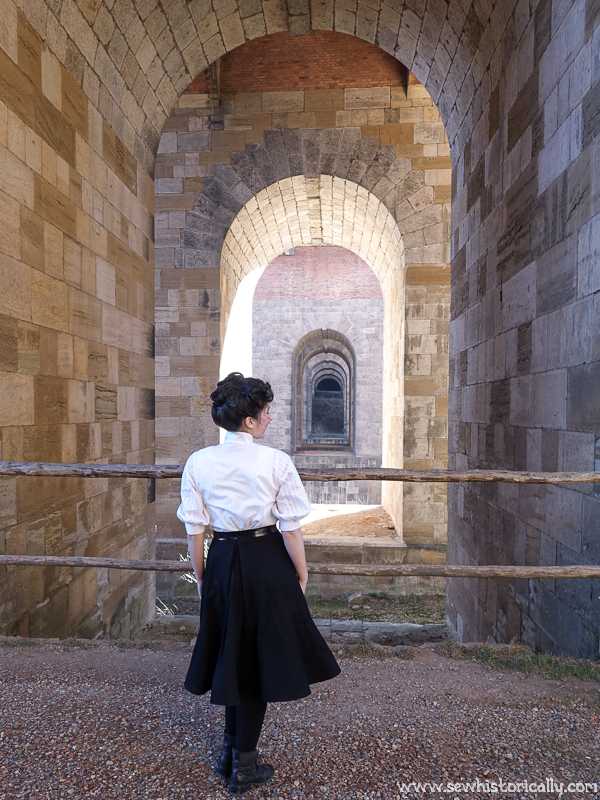
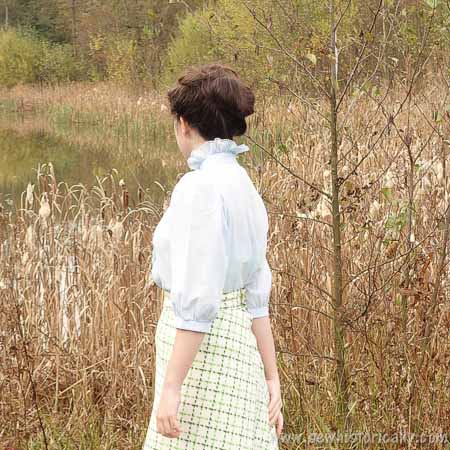
Love your Edwardian article, very detailed 🙂
Thank you! 🙂
This is one of the best articles I’ve read.
Absolutely love that period of dress. Wear it all the time with a sensible up dated version.
Am now in my eighties but get compliments almost everyday.
I love Upcycling op. shop vintage clothes.
Thank you so much! 😀 Glad you liked it!
I didn’t seem what to wear at a summer picnic? Thoughts? Thanks.
If it’s a fashionable summer picnic, Edwardian women wore the same type of dresses as they would for a summer garden party: lingerie dresses made of sheer cotton and lace embellished with lots of hand embroidery and lace. If it’s a casual summer picnic with family or friends, Edwardian women either wore shirtwaist costumes – consisting of a dark wool skirt and usually a white cotton blouse – or Edwardian cotton or linen wash dresses made of gingham, dotted or floral printed fabrics. Hope this helps! 😀